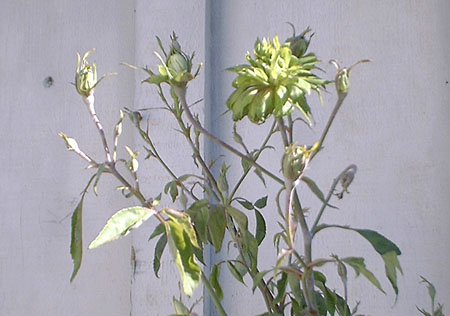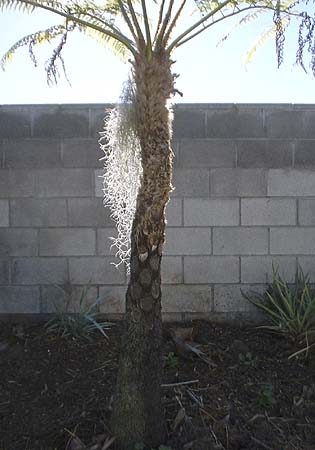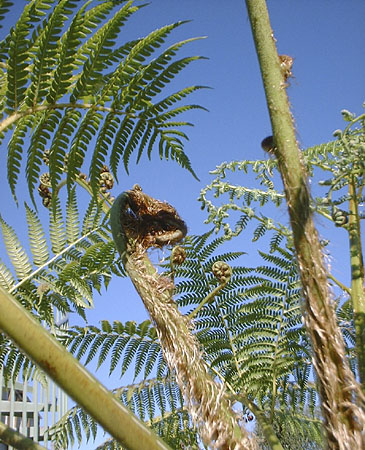I love big, splashy plants as much as the next person, but there’s a plant that I’ve got a special attachment to that’s neither big nor splashy.
The green rose, Rosa chinensis viridiflora, lives up to its name. When the “flowers” open, what’s inside the protective sepals is certainly green. But there are no rose petals in sight. The blossom just keeps on opening, revealing more and more sepals, all of them green in color, sometimes tinged with a reddish cinnamon color. Inside a typical rose, once the sepals unfurl and the petals open, you finally get to the pistils and stamens, the reproductive parts that enable sexual reproduction and perpetuation of the species. But this plant lacks them too, just like it lacks petals. If this plant were to turn up in nature, it’d go extinct once the single plant passed on.
Its history is a little fuzzy, though it was for sure introduced to the rose-growing world in 1856 by Bembridge and Harrison in England. In The history of the rose by Roy E. Shepperd, the author notes that the plant has been in cultivation since 1743, which for a plant with no hopes of reproduction by seeds is quite a feat. Through the years, people have found something about this plant interesting enough to start cuttings or make grafts onto rootstock or wholesale dig up the plant and take it along with them when they move.
I was a rose geek in my early teen years, growing and exhibiting roses around the Los Angeles area. At one point I had something over a hundred roses, including this one. I moved down to San Diego, and by the later 1980s finally had a house with room for plants. My parents were moving out of the homestead, and for some reason I felt the need to rescue this one rose from an uncertain future. Of all the roses, I dug up this one and moved only this one. Reading through some of the posts on this rose at davesgarden.com–including someone who moved her great grandmother’s plant–I’m not the only with an attachment to it.
And somehow, through the kindness of strangers smitten with this wonderfully weird plant, the green rose has stayed in cultivation for something like 264 years.



